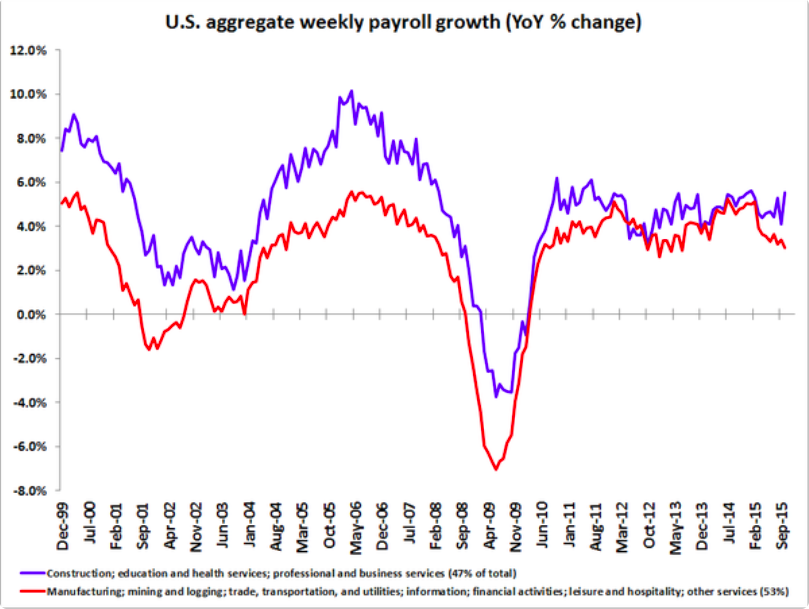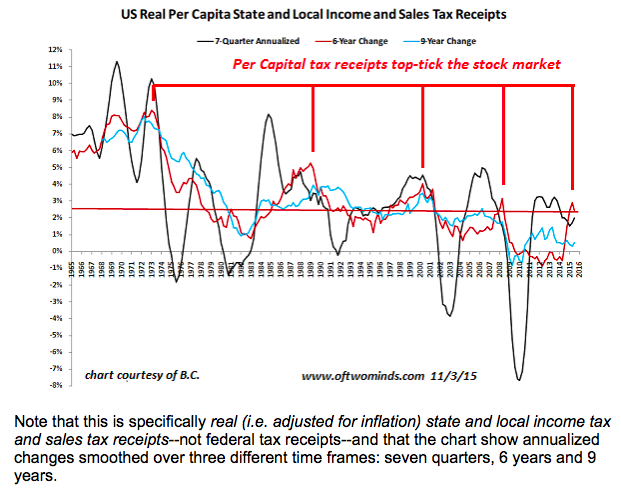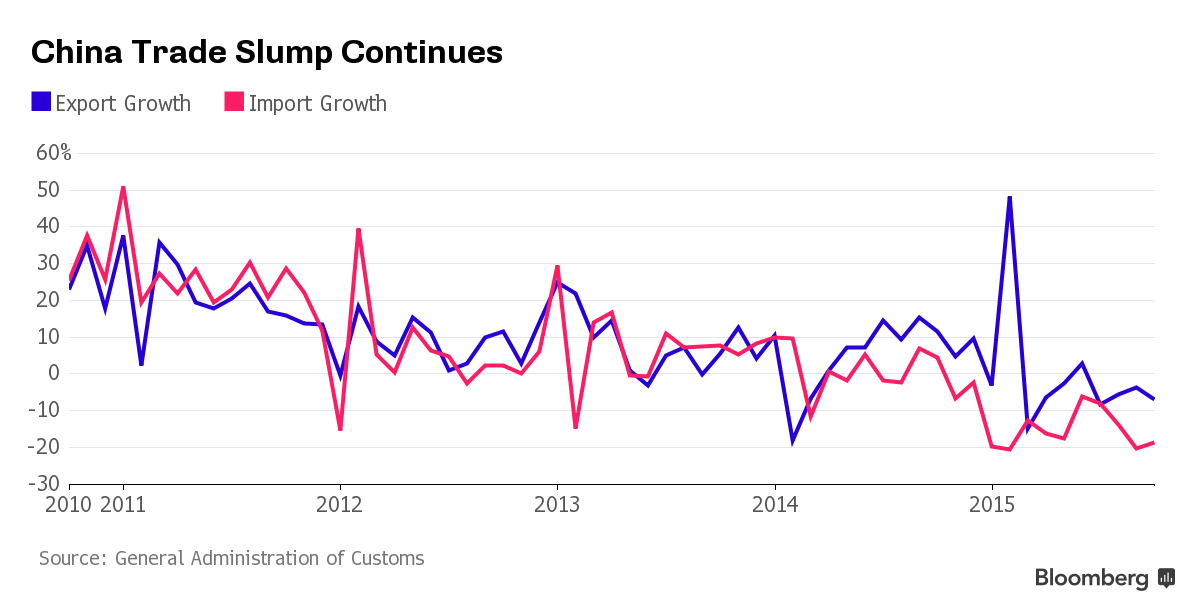The red line tends to drag down the blue line, often when deficit spending gets too low: Exports drop again, imports drop more, so the trade surplus grows, and the US should see more imports and fewer exports, while euro zone imports are down which adds to their trade surplus: China’s Trade Drop Means More Stimulus Measures Are Coming Exports drop for a fourth month, import declines match recordTrade surplus to help ease currency depreciation pressureChina’s exports fell for a fourth straight month and imports matched a record stretch of declines, signaling that the mounting drag from slower global growth will push policy makers toward expanding stimulus.Overseas shipments dropped 6.9 percent in October in dollar terms, the customs administration said Sunday, a bigger decline than estimated by all 31 economists in a Bloomberg survey. Weaker demand for coal, iron and other commodities for China’s declining heavy industries helped drag imports down 18.8 percent in dollar terms, leaving a record trade surplus of .6 billion.Fiscal stimulus this year includes more infrastructure spending and expanding the lending capacity for the China Development Bank and other policy banks. The PBOC has also made repeated reductions to the amount of reserves required of lenders.
Topics:
WARREN MOSLER considers the following as important: currencies, Employment
This could be interesting, too:
Ken Houghton writes Just Learn to Code
Merijn T. Knibbe writes Employment growth in Europe. Stark differences.
NewDealdemocrat writes In-depth look at the leading indicators from the employment report
NewDealdemocrat writes One more time: bifurcation in the jobs report, as Establishment Survey shows continued jobs growth, while Household Survey comes close to triggering the “Sahm Rule”
The red line tends to drag down the blue line, often when deficit spending gets too low:
Exports drop again, imports drop more, so the trade surplus grows, and the US should see more imports and fewer exports, while euro zone imports are down which adds to their trade surplus:
China’s Trade Drop Means More Stimulus Measures Are Coming
Exports drop for a fourth month, import declines match record
Trade surplus to help ease currency depreciation pressure
China’s exports fell for a fourth straight month and imports matched a record stretch of declines, signaling that the mounting drag from slower global growth will push policy makers toward expanding stimulus.
Overseas shipments dropped 6.9 percent in October in dollar terms, the customs administration said Sunday, a bigger decline than estimated by all 31 economists in a Bloomberg survey. Weaker demand for coal, iron and other commodities for China’s declining heavy industries helped drag imports down 18.8 percent in dollar terms, leaving a record trade surplus of $61.6 billion.
Fiscal stimulus this year includes more infrastructure spending and expanding the lending capacity for the China Development Bank and other policy banks. The PBOC has also made repeated reductions to the amount of reserves required of lenders.Exports to Japan slumped 9 percent in the first 10 months from a year earlier, while those to the European Union declined 3.7 percent. Shipments to Hong Kong dropped 11.7 percent during the same period.
Slowing Growth
Exports to the U.S., China’s largest trading partner, jumped 5.8 percent in the first 10 months from a year earlier, while those to the Association of Southeast Asian Nations increased 4.2 percent. Shipments to India rose 8.9 percent.
Imports from all 10 of the major trade partners listed by the customs administration declined in the first 10 months. Imports from Australia, a major source of China’s iron ore during the real estate boom, plunged 25.7 percent.
The record trade surplus helped spur a surprise increase in foreign-exchange reserves in October despite an erosion of holdings after the PBOC intervened to boost the yuan. The central bank’s stockpile rose to $3.53 trillion last month from $3.51 trillion at the end of September, the PBOC said Saturday.
“The large trade surplus could offset capital outflow” and curb expectations for the yuan’s depreciation, Liu Ligang, chief Greater China economist at Australia & New Zealand Banking Group Ltd. in Hong Kong, wrote in a note.
Looks like the Swiss National Bank, with about 550 billion in reserves in its portfolio obtained selling it’s currency for euro to hold the peg, may have been selling some of those euro to buy $ to buy US stocks:
SNB’s Stake in Apple, Microsoft, Exxon Rose in Third Quarter
By Catherine Bosley
Nov 4 (Bloomberg) — The Swiss National Bank owned more shares of Apple Inc., Microsoft Corp. and Exxon Mobil Corp. in the third
quarter, taking its U.S. equity portfolio to $38.95 billion.
Switzerland’s central bank held 10.3 million shares in the iPhone maker on Sept. 30, according to a regulatory filing made to the U.S. Securities and Exchange Commission and published on Wednesday. That compares with 9.4 million shares at the end of June, an increase of nearly 10 percent.
The SNB’s stake in Exxon rose by a similar extent, while in Microsoft it registered an increase of just over 9 percent.


